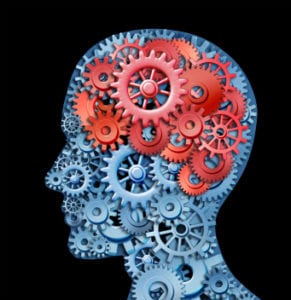Mike Rechtien, M.A.
What Is Attachment Theory?
Attachment theory is a developmental model that attends to the adaptation of the child within the family environment and subsequently, through that lens, to the cultural environment into which the family is embedded. This theoretical model lends itself to various disciplines that attempt to shed light on and bring healing and growth to our internal experience, as this is the sensory lens through which we make meaning of experience in the present – our unique subjective reality.
Theoretical models often explain similar phenomenon in very different ways. For instance, ego states may well be neural networks or memory systems working in relative isolation, as in a panic attack. This can symbolize for us how the brain takes in information, stores it, and accesses it in present situations. As our knowledge increases scientifically, the disciplines evolve.
EMDR
Another good example of this is EMDR, which was conceived and practiced initially as an exposure therapy named Eye Movement Desensitization (EMD). However, this behavioral model could not account for the consistent and rapid clinical results achieved in thousands of EMDR treatment sessions. Therefore, it was replaced by the Adaptive Information Processing model and the suffix, “and Reprocessing” was added to the name, thus EMDR.
Creator Francine Shapiro writes:
- “The [EMDR] model regards most pathology as derived from earlier life experiences that set in
motion a continued pattern of affect, behavior, cognitions and consequent identity structures.“ (p. 16)
Life experience sets in motion patterns of thoughts, feelings, behaviors, and self identity! What else is there? She goes on to say:
- “The pathological structure is inherent within the static, insufficiently processed information stored at the time of the disturbing event… pathology is viewed as configured by the impact of earlier experiences that are held in the nervous system in state-specific form.“ (p. 17)
State specific is an interesting term, sometimes referred to as state dependent memory. It is a long held belief in the psychology field that unresolved trauma – an emotion state, gets stuck in the neural system and is accessed in the present only by re-activating that state. Since unresolved trauma, by definition, is not “worked through” and therefore repressed and/or forgotten, it is not fully accessible in cognitive/narrative form.
There may be bits and pieces, or nothing, but the emotion state (say fear) of the event gets triggered in the present by smells, sights, sounds or situations that remind the brain of the event.
EMDR Therapy With Founder Francine Shapiro
Shapiro also says:
- “As long as the memory is dysfunctionally stored, the negative affect is maintained regardless of the cognitive awareness… [but] there is a system inherent in all of us that is physiologically geared to process information to a state of health.“
EMDR accesses this physiological function inherent in all of us that allows the brain to complete its cycle to a state of mental health.
Attachment theory and EMDR’s Adaptive Information Processing model share the understanding that pathology which is not chemically or biologically derived is developmental. The pathological symptoms served an adaptive and necessary (perceived) purpose in childhood and adolescence when the brain assimilated the information from experience.
Each time we bring up the experience for processing of some type, Shapiro states that we “move it toward the adaptive information it needs for resolution”.
Reference:
- Francine Shapiro, Eye Movement Desensitization and Reprocessing, (New York: Guilford Press, 2001)
http://www.emdr.com/francine-shapiro-phd - For More Information on EMDR please visit EMDR Movement Desensitization and Re-Processing and www.emdr.com
- For More Information on Attachment Theory visit Wikipedia.org












